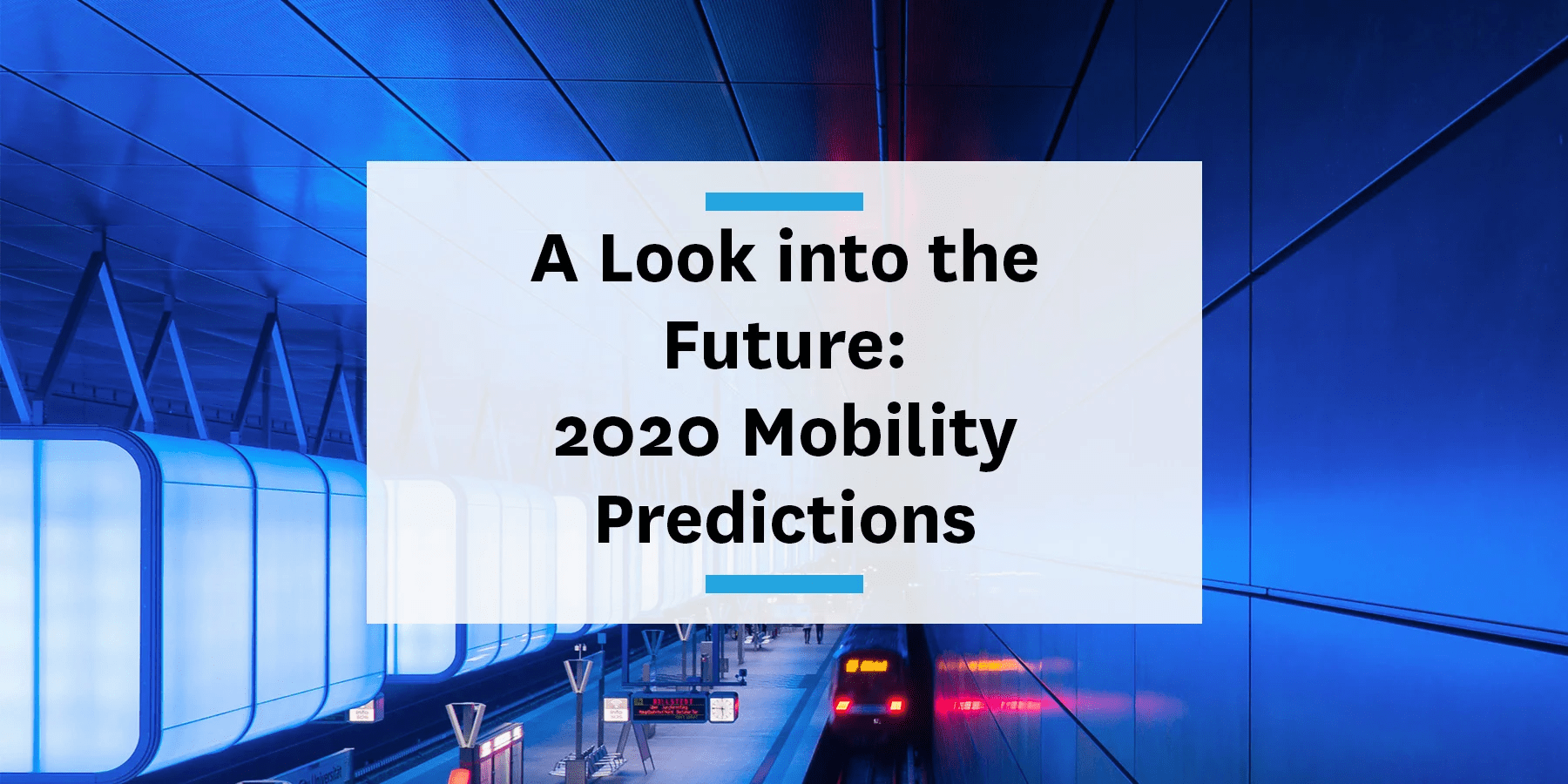If you asked someone in 1970 what they thought 2020 was going to look like, I’m sure the Jetsons would have been the first thing out of their mouth. While companies are working on flying cars, there’s still a ways to go before they become anything near a household commodity. To bring everyone back down to Earth, we are going to cover our realistic mobility predictions for the new year and new decade.

More congestion pricing
New York City is slated to become the first city in the United States to introduce congestion pricing on downtown streets. Although the program isn’t scheduled to go into effect until 2021, work has already started. In the next year, we are expecting more cities to announce congestion pricing on some busier streets.
While no plans have been announced by cities other than New York as of yet, there have been ongoing studies testing the effectiveness of congestion pricing. Washington, DC, set aside nearly $500,000 earlier this year to study the impact congestion pricing could have on the nation’s capital. Los Angeles, a city notorious for its traffic jams, conducted a similar study. The study found that charging a $4 fee to drive in a designated area of the city could reduce traffic as much as 20%.
History has shown congestion pricing earns a lot of pushback in the early stages. At the same time, history has also shown congestion pricing leads to lower vehicle emissions, shorter travel times, and increased use of alternative transportation methods like bikes and public transit.
More mobility hubs
We recently wrote about the rise of mobility hubs in the US, and we are still riding high on these transportation destinations. Earlier this year, Minneapolis launched a pilot to have 12 mobility hubs by the end of November 2019. These hubs are located at busy intersections, connecting bus stops with micromobility options.
A major benefit these hubs provide is the assistance they provide with the first- and last-mile problem commuters face. For a lot of individuals, getting off the bus or metro isn’t the end of the commute. Because it can be cost-prohibitive to live directly near transit options, there’s usually another mile or more between them and their front door. These hubs – placed at transit stops – give commuters access to the mobility options that can drive their commute home.
Due to the increase in micromobility vehicles, the need to close the first- and last-mile gap, and an increased focus on pedestrian safety, we expect to see a rise in mobility hubs in cities across the country.
Rethinking curb space
As cities continue working to lower their emissions and promote alternative forms of travel, curbs are becoming a central focus. As scooters, bikes, and walking increase in popularity, the way curbs are used will have to change. Delivery vehicles are a major curb menace, whether it’s your UberEats driver or UPS delivering a weekend online shopping spree, cars and trucks dominate curb space. In order to make safer street conditions, curbs are going to change.
To make deliveries less imposing, a few companies are swapping out trucks for tricycles. UPS first launched their delivery trikes in Seattle in 2018, and New York City just recently announced a pilot program allowing UPS, Amazon, and DHL to roll out 100 electric delivery bikes each over Q1 and Q2 of 2020. This announcement also comes on the heels of the city announcing a $1.7 billion investment to install 250 miles of protected bike lanes.
In addition to using smaller vehicles for deliveries, companies are working to put reservations on curb space. CurbFlow launched to make finding curb space easier for delivery drivers, as well as passenger pick-up and drop-off locations. When curb space is available for cars and trucks, roads don’t get as congested and bike lanes can stay car free.
Moving away from car-centric street design
In the past, cars ruled supreme, but if you drive to work, you know where that has gotten us. The idea used to be that more lanes mean less congestion, when in reality, the opposite happens. Adding more lanes just makes room for more cars, and it makes driving the default behavior.
When streets are made for all forms of mobility, driving becomes less attractive than, say, taking the bus.This logic is a major driver behind cities making some of their busiest streets car-free. San Francisco announced Market Street will be car-free, while simultaneously installing more continuous bike lanes and improving the streetcar and bus services.
New York recently made 14th St. car-free and put an emphasis on the bus system, and the results speak for themselves. Bus travel times have dropped significantly, leading to buses operating ahead of schedule, and ridership has increased. And, as we mentioned above, the city is adding 250 miles of protected bike lanes.
With the announcements and success of mobility-centric street designs in two of the country’s biggest cities, we expect more to follow suit in 2020. Even if plans don’t go into effect immediately, our expectation is cities will announce plans to accommodate scooters, bikes, and buses over cars.
New year, new trends
There are so many things to be excited about in the world of mobility, we had trouble narrowing it down. Cities are acknowledging the need to move away from car-centric streets and embracing this new era of micromobility. There’s also a sense of urgency to bring public transit systems up to par to accommodate growing city populations and the fading appeal of car ownership. If that’s where things are headed, then sign us up.




